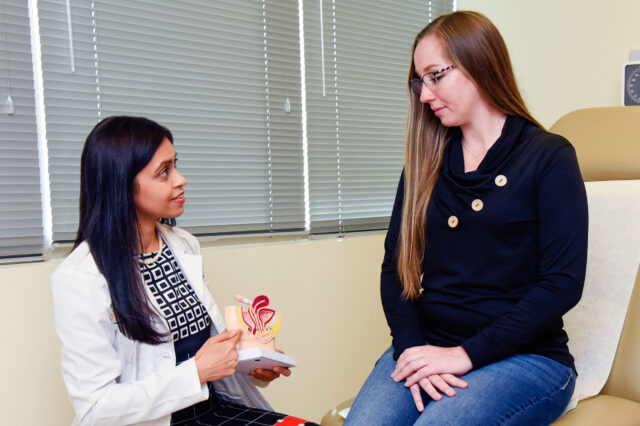Connect with others experiencing PFD
You are not alone. As many as 1 in 3 women experience pelvic floor disorders. 80-90% of women who seek help will experience significant improvement.

Update your location to show providers, locations, and services closest to you.

If you’re enduring the discomfort and inconvenience of urinary or fecal incontinence, overactive bladder or other pelvic floor disorders, we want to help you get your life back. Though we understand that some patients are uncomfortable discussing their symptoms, we believe no one should have to suffer in silence. These conditions are common — affecting one in four women — and are often curable.
You can count on our knowledgeable and compassionate team of specialists with UF Health Female Pelvic Medicine and Reconstructive Surgery in Jacksonville. Our physicians are highly trained in female pelvic medicine and reconstructive surgery and are dedicated to helping you find relief from symptoms and improving your quality of life.
Your pelvic floor consists of muscles and connective tissues that support the bladder, bowel and reproductive organs. If these muscles weaken or are injured — sometimes a result of childbirth, being overweight, surgery or aging — you can develop pelvic floor disorders.
The most common conditions we manage include:
We strive to create a comfortable environment where you can discuss your symptoms with our specialists and learn more about your condition. Our goal is to listen to you and work together to determine the best treatment option for your symptoms and overall health.
Our accomplished team offers comprehensive services in the diagnosis and treatment of pelvic floor and urinary tract disorders. Our treatment philosophy is to first explore the full spectrum of nonsurgical approaches, such as dietary modifications, pelvic floor therapy and medications. For patients who do require surgery, we provide the most advanced minimally invasive robotic-assisted surgical procedures.
You are not alone. As many as 1 in 3 women experience pelvic floor disorders. 80-90% of women who seek help will experience significant improvement.




June 30, 2021
Department of Obstetrics and Gynecology, +4 more
